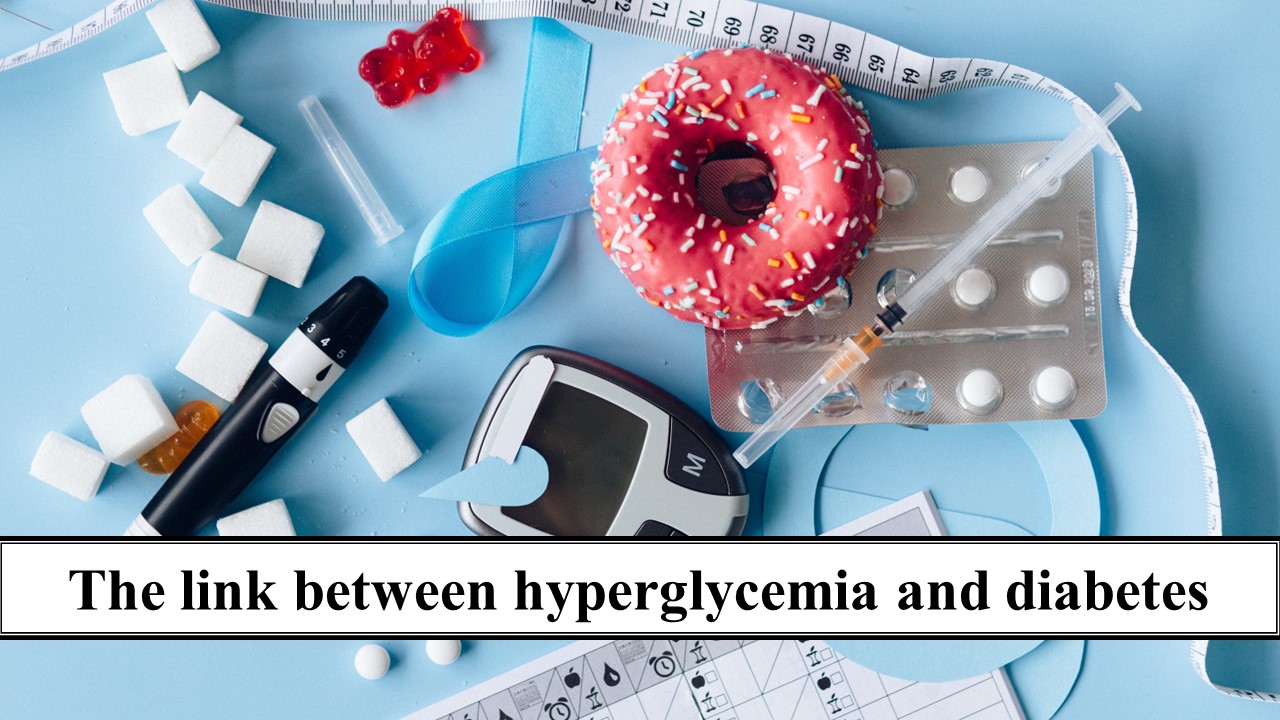The link between hyperglycemia and diabetes

Hyperglycemia, also known as excessive blood glucose, is a symptom of diabetes. Diabetes can develop due to insufficient insulin production, resistance to the effects of insulin, or both.
Individuals with prediabetes, in which blood sugar levels are higher than normal but not as high as in diabetes, are at risk for developing diabetes.
Doctors typically diagnose prediabetes at 100 milligrams per deciliter (mg/dl) of fasting glucose and diabetes at 126 mg/dl.
There are two possible mechanisms by which diabetes causes high blood sugar levels: insufficient insulin secretion in the pancreas or resistance to the action of insulin elsewhere in the body.
In type 1 diabetes, the immune system destroys the pancreatic cells that produce insulin. In type 2 diabetes, the body's cells resist insulin's effect, and the pancreas fails to respond appropriately. It does not produce sufficient insulin.
People with type 1 diabetes must take additional insulin to maintain normal blood sugar levels. Some individuals with type 2 diabetes may require insulin, though they may also take oral medications that do not contain insulin.
Regardless of the type of diabetes, all diabetics should monitor their blood sugar levels to ensure they remain within a secure range.
Several behaviors can worsen hyperglycemia in people with diabetes, including consuming an excessive amount of carbohydrates, exercising less than usual, taking an inadequate amount of insulin or other diabetes medications, experiencing stress from other illnesses or life events, and receiving treatment with other medications, such as steroids.
Those with diabetes may need to take additional medication to maintain stable blood sugar levels during illness or stress.
Dawn phenomenon, or an increase in hormones that occurs between 4 and 5 a.m., can also increase blood sugar. This is the cause of morning elevated blood sugar levels.
Hyperglycemia is hazardous because it typically does not cause symptoms until glucose levels are extremely elevated.
People with type 2 diabetes who have had the disease for several years may have no symptoms despite having elevated blood sugar levels. Numerous individuals have undiagnosed type 2 diabetes.
The risk of diabetes-related complications, such as kidney disease, ocular disease, and neuropathy, increases with prolonged hyperglycemia.
Typical hyperglycemic signs and symptoms include frequent urination, increased thirst, increased hunger, blurred vision, weight loss, fatigue, cuts or sores that do not resolve, high sugar levels in the urine, and weight loss.
In addition to consulting a physician about regulating their blood sugar levels, individuals can take the following measures to prevent hyperglycemia:
Regular exercise is an effective means of controlling blood sugar levels. Cardiovascular exercises with a steady state tend to reduce glucose levels more effectively than interval training. Take a lengthy walk or ride a bicycle to assist the body's glucose utilization.
Medication: People with diabetes must always take medication and strictly adhere to their physician's instructions. They can modify a prescription to meet the ongoing requirements of a diabetic patient.
A doctor or dietitian can assist a diabetic in developing a healthy dietary plan.
Managing stress: Taking steps to manage stress and illness may be an effective method to reduce blood sugar spikes caused by stress.
資料來源:Valencia Higuera (2019), “The link between hyperglycemia and diabetes”. Medical News Today. https://www.medicalnewstoday.com/articles/311204.